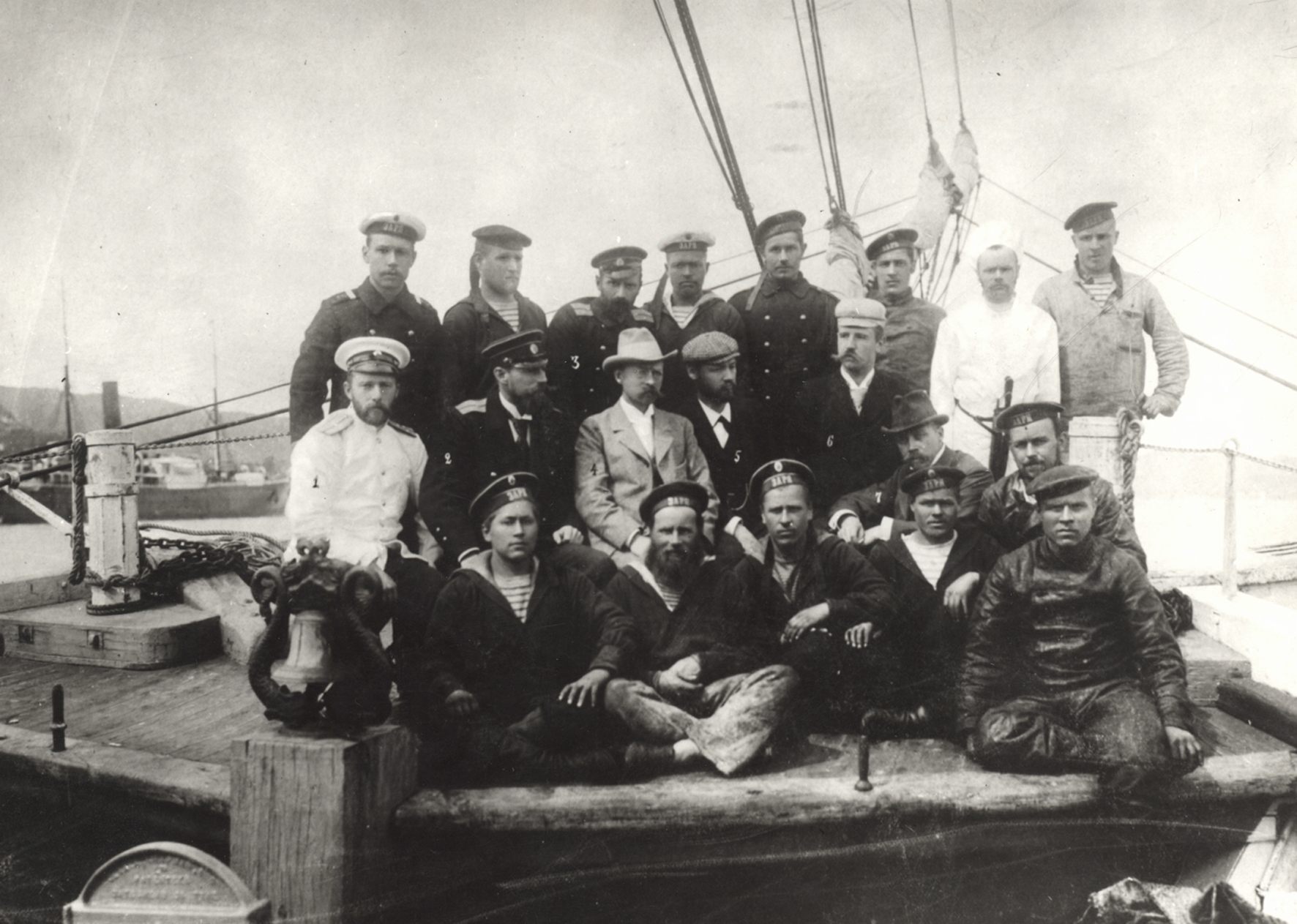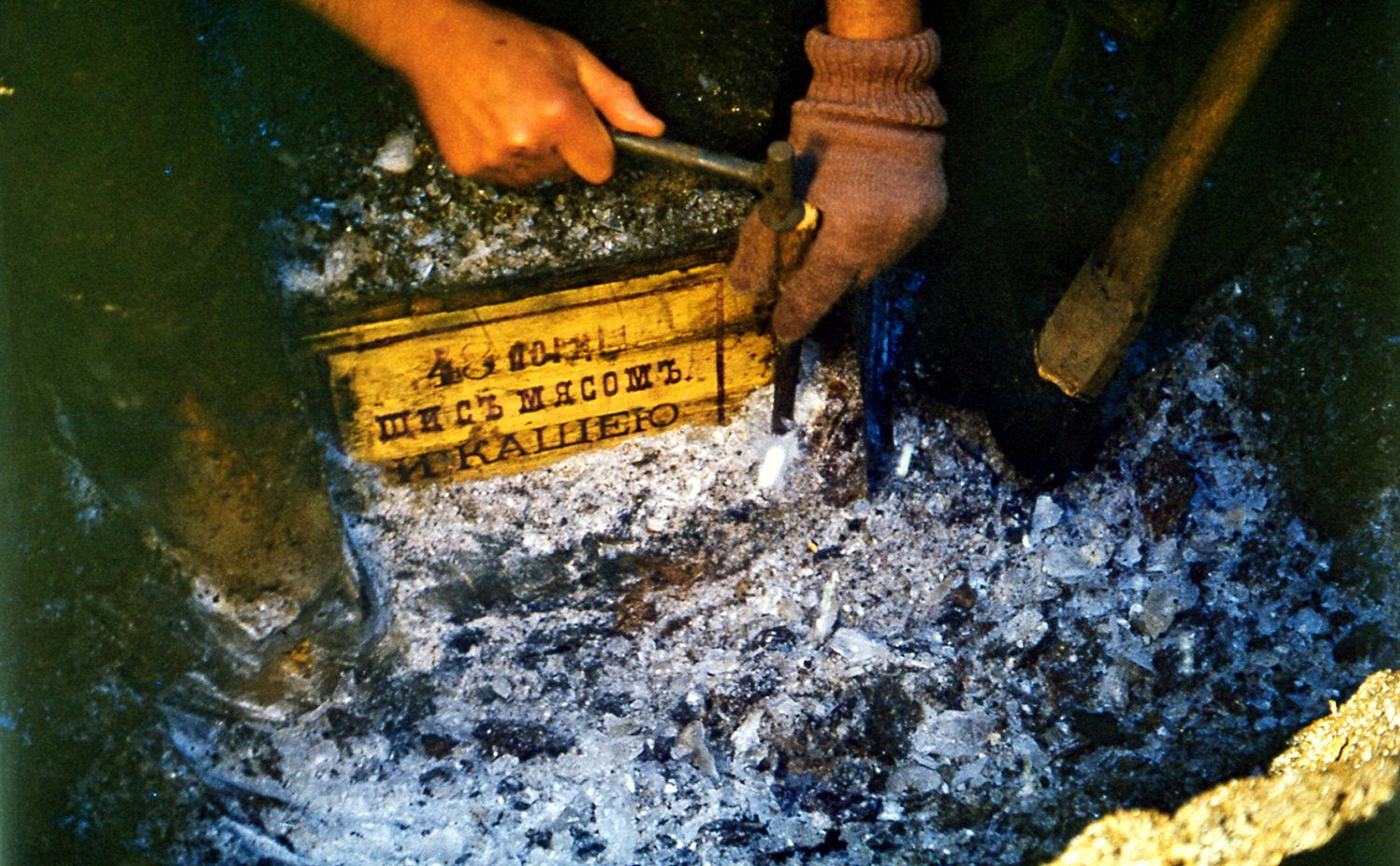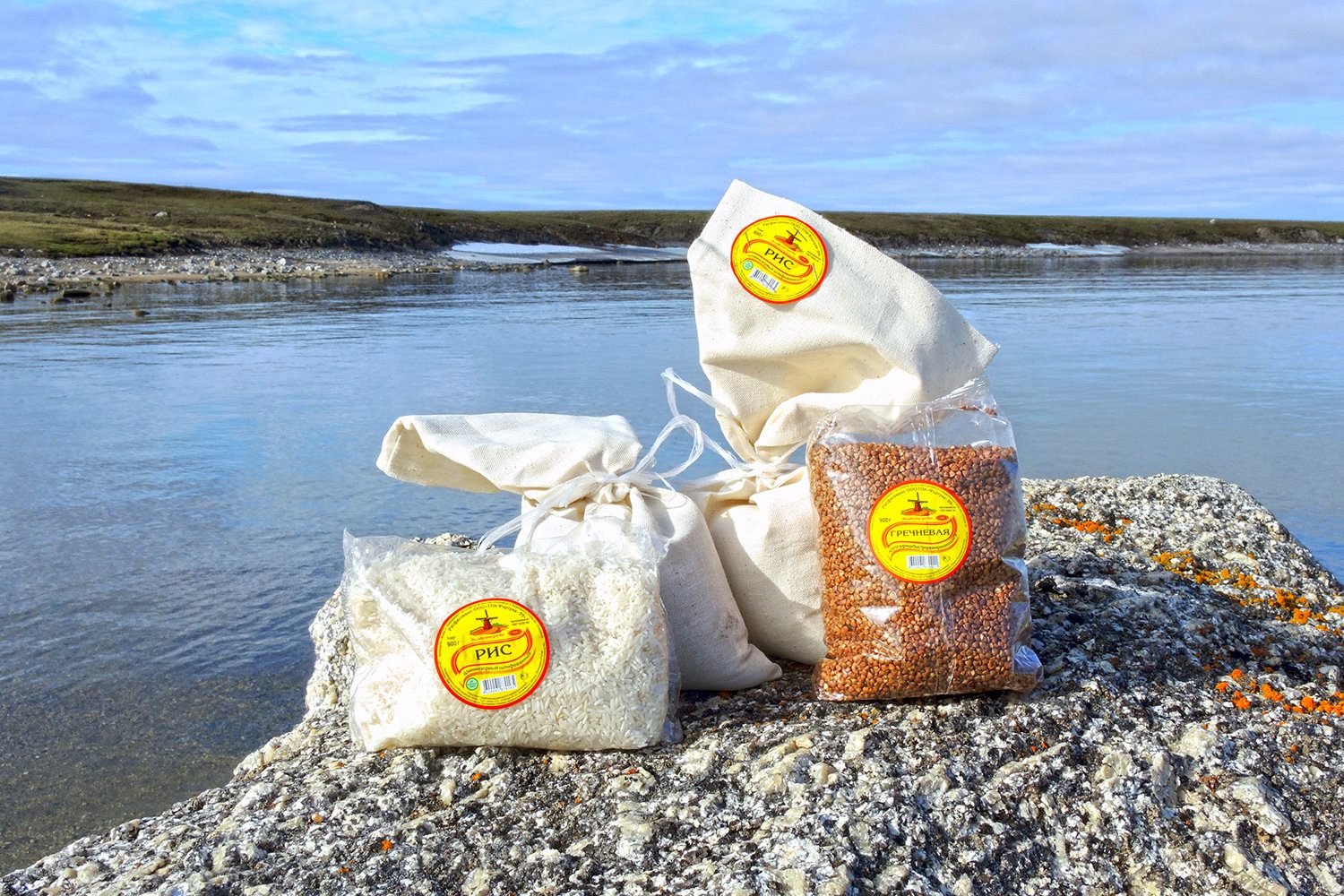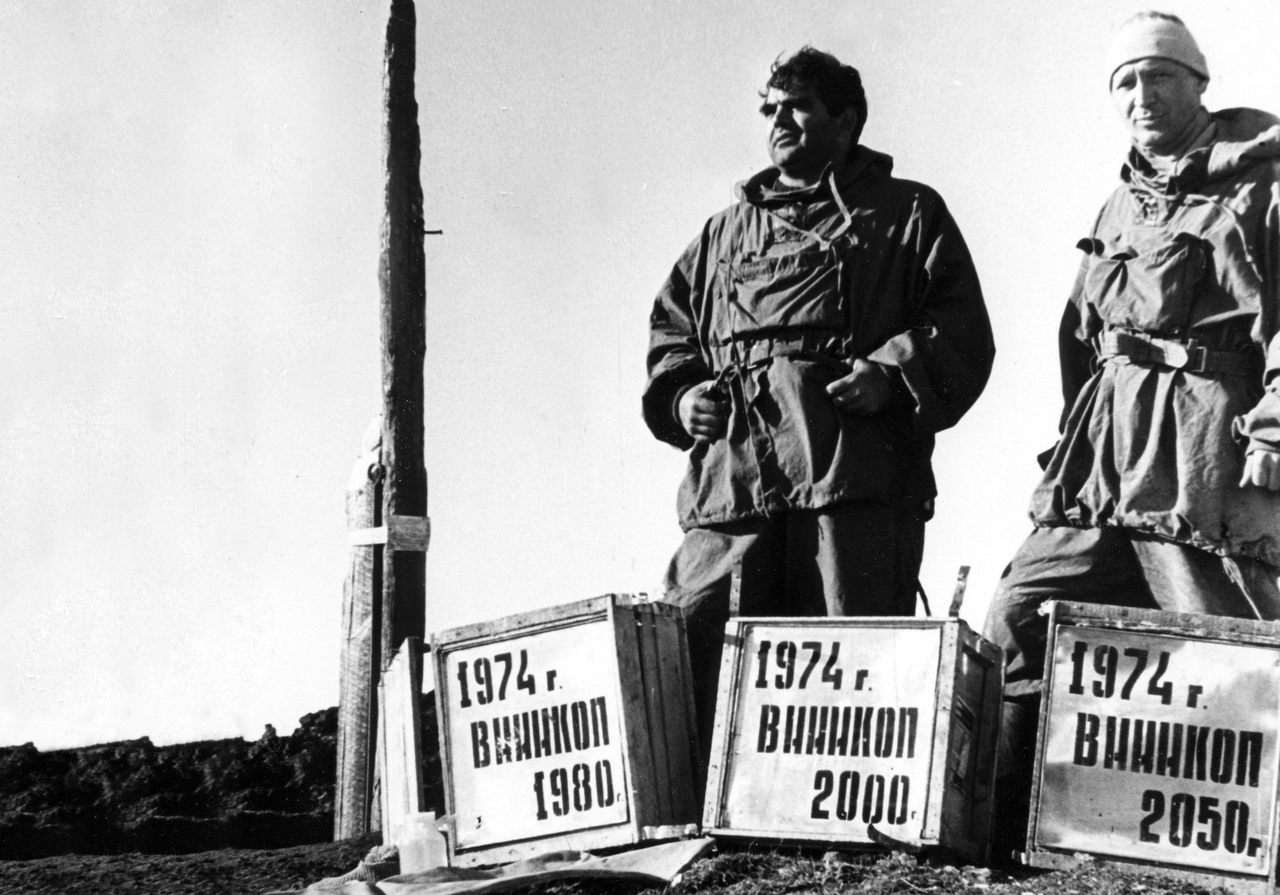
The Quest to Find a Lost Arctic Explorer’s Buried Soup
An “Arctic mystery” may lead to a future of food under the permafrost.
In 1886, the renowned geologist, zoologist, and explorer Baron Eduard von Toll stood on the coast of the largest of the New Siberian Islands, gazing north into the Russian Arctic Ocean. He was sure he saw it in the distance: Sannikov Land, a mythic island that had bewitched and eluded explorers for a century. To his guide, he wondered aloud if he’d ever make it there. His guide’s response matched Toll’s own determination: “Once I set foot there, I can die.”
In 1900, after years of persuasion, the Russian Academy of Sciences finally agreed to sponsor Toll’s expedition to find Sannikov. Aboard the ship Zarya, Toll set sail into the Arctic. But from the start, the expedition was buffeted by trouble: navigational confusion, coal shortages, scurvy, a power struggle between Toll and the captain, the death of the doctor, erratic winds, flooded decks, brutal snowstorms, starving sled dogs, and a raging polar bear. Worst of all was the constant threat of encroaching ice, which could entrap the ship and constrict around its wooden hull like a vise.

Nonetheless, Toll and his team of scientists kept busy. They mapped uncharted rivers and islands, analyzed glaciers, gathered fossils and fauna, and studied their findings in the ship’s onboard labs. During overland forays, they relied on stores of canned and dried foods, buried and preserved in the permafrost of the Taimyr Peninsula. All the while, Sannikov Land remained a phantom out of reach, beckoning Toll to the northern horizon.
19 months into the trip, the RAS ordered Toll by telegram to wrap it up. He had one final summer to find his island. In May 1902, with the Zarya’s path frozen in every direction, Toll, his navigator, and two Yakut crewmen set out by dogsled and kayak to the far-north Bennett Island. Here, they hoped to establish a base from which to venture even further north, to Sannikov.

Over three months on Bennett, the team ate their way through three bears, countless seabirds, and the island’s small herd of reindeer. Out of optimism that the Zarya would soon retrieve them, they failed to keep anything for the winter. But the Zarya remained stymied by ice for months, and by October, the window for rescue was closed. Toll realized that if they stayed on the island, they wouldn’t survive. And so, he and his team ventured south, back towards the New Siberian Islands, paddling thin-hulled kayaks into a deadly mass of rapidly freezing, razor-sharp ice. They were never seen again.
Toll’s death cemented his legendary status in Russia, which continued to sponsor searches for Sannikov into the 1930s. Toll’s widow published his diaries, and in 1959, a Russian translation meant they were devoured by a new generation of Arctic adventure-lovers.

One page detailed a food store that Toll had buried on the Taimyr Peninsula in September 1900, early in his voyage. First, he described its location: a spot five meters above sea level, marked with a wooden cross. Then he described the hole itself, dug deep through thawed clay, peat, and ice. And finally, the contents: “a box with 48 cans of cabbage soup, a sealed tin box with 15 pounds of rye rusks [dry biscuits], a sealed tin box with 15 pounds of oatmeal, a soldered box containing about four pounds of sugar, 10 pounds of chocolate, seven plates and one brick of tea.”
After the diary’s Russian publication, explorers rushed north to find Toll’s depot. But his description of the store’s geographic location proved impossibly vague. What’s more, every expedition searched during the spring, when the snow was still heavy. Inevitably, they all came home empty-handed. It seemed as if the Toll food cache might remain as elusive as Sannikov Land itself, were it not for a geopolitical tangle in 1973.

At the time, 31-year-old Dmitry Shparo, a Russian math professor and part-time tundra explorer, was organizing a group to attempt the first-ever journey to the North Pole by ski. His team belonged to the Scientific-Sport Expedition, sponsored by the official newspaper of the Young Communist League. To prepare for the journey, they trained not just in skiing, but in biomedicine, electronics, and food science (hence the “scientific” part of their name). But at the last minute, the YCL squelched the plan. “The conception of the Iron Curtain was actually almost tangible,” Shparo explains today. To travel beyond it, into the neutral waters of the North Pole, “was impossible.”
But the eager adventurers were undeterred. They relocated to the coast of the Taimyr Peninsula (safely within Soviet territory) and reconceived their expedition entirely. Instead, they divided into three teams, each of which set out to uncover an unsolved “Arctic mystery.” One of these mysteries was the Toll food cache.
As Shparo recalls, Toll’s food depot “did not seem so significant to us at that time.” Indeed, a more pressing task for the Toll team was laying advance food stores for the other two missions. En route to their expedition, the food-searchers endured ribbing from every quarter. Was it true, they were asked, that Toll had buried 17 bottles of French cognac, too?
On a late July afternoon, a helicopter deposited the team on a point of grassy coastal tundra that previous searchers had pinpointed as the likeliest location of the cache. Within hours of their arrival, they were standing over a moss-covered pile of rocks, inspecting a stub of wood protruding from the center. It appeared to be the remains of a post, with a metal nail and an inscription: “1900.” Together, they wondered: Could it really have been this easy?

In the light of morning, they bolted awake and returned to the spot. A pencil rubbing of the post revealed further confirmation: “Zarya Cache: 1900.” They cleared the stones, and, with a metal probe and a pick, ripped into the ground below, spraying black earth, then tiny chunks of permafrost with each blow. At last, the pick hit a large flat stone, which was agony to remove. Underneath was a layer of ice. One crew member tapped it with his probe and easily pierced not just the ice, but something metal underneath. And then, up through the pit, mingling with the sweet scent of permafrost, came the unmistakable smell of rye.
After hugging and handshaking, the team extracted an unmarked metal cube and left behind a wooden box, marked “Cabbage soup, 48 cans.” Then, they refilled the hole, marked its spot, and as soon as they could, returned to base camp with a surprise treat for the other two teams: Toll’s 73-year-old rye biscuits. “They were very tasty!” Shparo recalls, 46 years later.

When the metal cube reached Moscow, the Canning Research Institute opened and tested its contents, which included oats, tea, matches, and chocolate. The oats were perfectly preserved and made a delectable porridge. Experts across the field of food preservation were astonished, and intensely curious. So was Shparo, whose eyes were now open to what this could mean. As he and Alexander Shumilov explain in Three Mysteries of the Arctic: “Nature had set up a unique experiment and it was up to man to take advantage of it and carry it further.”
The next summer, the state media and the Soviet Ministry of the Food Industry sponsored a larger expedition to return to the site of the cache. There, they retrieved 34 cans of cabbage soup and left 14 behind. They slated three to be retrieved for research in 1980, 2020, and 2050, respectively, and the remainder to stay buried indefinitely. What’s more, the team buried several containers of modern food for study by future generations.

A few days later in Moscow, in front of countless food-related agencies and institutes, state media, and Shparo, the first can of cabbage soup was opened with dramatic flair, using Toll’s own knife. Despite a rapid darkening of the meat on exposure to the air, attendees sampled small teaspoons of the soup. The master of ceremonies deemed it “pleasant and characteristic of cabbage soup with buckwheat.” Meat, cabbage and buckwheat, he joked: all three essential Russian foods at once.

Inspired by the Toll depot discovery, permafrost food-storage experiments continued on the Taimyr Peninsula for the next 45 years. According to Vladimir Ledenev, head of the All-Russian Research Institute of Food Biotechnology, the point of the research is not to observe what stays the same during long-term permafrost storage, but to understand what changes. And the findings have been surprising. Prolonged freezing causes black and green tea leaves to form tiny cracks, improving its flavor. Over time, frozen vodka becomes “soft,” and tastes better as well. A vast array of foods, as well as seeds and fuel ingredients, have been subject to long-term study in the permafrost, with researchers exhaustively documenting changes in chemistry, physical properties, and quality.

But it’s not just about flavor. Increasingly, Russia’s military is building bases above the Arctic Circle. With air and land delivery often complicated by weather, the permafrost could be a lifesaver. “If we store this food inside natural permafrost refrigerators, people would be able to stay there for any time period, and they would not starve,” says Sergei Ulanin, director of the Research Institute for Storage Issues, which is planning at least one other permafrost storage facility besides Taimyr. And since 65 percent of Russian territory is currently covered by permafrost, the technique also has potential as a low-cost emergency storage system for the whole country.

It is ironic that such practical and concrete solutions stemmed from an unfulfilled dream. In May 1974, Shparo stood on the same spot in the New Siberian Islands where Toll thought he spotted Sannikov Land in 1886. By the 1970s, there were three hypotheses for Toll’s sighting. It may have been a splinter of a glacier, a land mass that eroded away, or even a mirage. But for Shparo, who had long considered Toll a hero and would soon join the second food retrieval expedition, this place and this moment were charged with significance. Here began an obsession that led to a great scientist’s death. But what Toll left behind would lead to discoveries that only his disappearance made possible.
Gastro Obscura covers the world’s most wondrous food and drink.
Sign up for our regular newsletter.







































Follow us on Twitter to get the latest on the world's hidden wonders.
Like us on Facebook to get the latest on the world's hidden wonders.
Follow us on Twitter Like us on Facebook